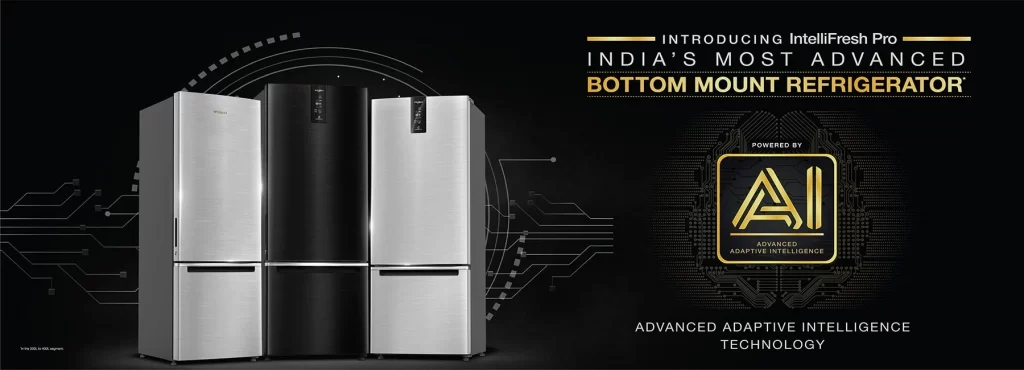Samsung Refrigerator Service Center in Hyderabad Additionally, there are a lot of Support facilities on Hyderabad and Secunderabad to get certain top Samsung Refrigerator repair services near me Kukatpally Hyderabad however that which distinguishes is our very best administration our Samsung Refrigerator Repair Service Centre in Hyderabad quality and moment reaction. Samsung Refrigerator service in Hyderabad We have 15 years of participation in making perfect appliances for the home repairs and administrations for our clients; we have picked up their trust, also, making us put stock within the new. Samsung Refrigerator technician in Hyderabad Technician / Mechanics are authorized from Prime-support to do Samsung refrigerator repair in Hyderabad. Samsung Refrigerator Service Centre in Hyderabad Telangana Engineers will use original spare parts to repair Samsung refrigerator customer fridge problems . Contact our Prime-Support samsung refrigerator service center phone number hyderabad is 7337443480 for this pandemic situation help. Our Prime-Support Samsung authorised samsung refrigerator service center in hyderabad Technicians are well trained and customer centric. Prime-Support is the Best Samsung Refrigerator Service Centre in Kukatpally Hyderabad Telangana in lockdown to get best support from us. Prime-Support is having technicians Authorised samsung refrigerator service centre in hyderabad.
Common solutions for: Samsung Refrigerator is not Cooling
- The condenser coils are usually located under the refrigerator. They dissipate heat as refrigerant passes through them. If the condenser coils are dirty, they won’t dissipate the heat effectively. As debris builds up on the coils, the refrigerator becomes less efficient, causing the refrigerator to work harder to cool down. If the coils are significantly dirty, the refrigerator will not be able to maintain the proper temperature. Check the condenser coils to determine if they are dirty—if the condenser coils are dirty, clean them.
- The condenser fan motor draws air though the condenser coils and over the compressor. If the condenser fan motor is not working properly, the refrigerator won’t cool properly. To determine if the fan motor is defective, first check the fan blade for obstructions. Next, try turning the fan motor blade by hand. If the blade does not spin freely, replace the condenser fan motor. If no obstructions are present and the fan blade spins freely, use a multimeter to test the fan motor for continuity. If the condenser fan motor does not have continuity, replace it.
- The evaporator fan motor draws air over the evaporator (cooling) coils and circulates it throughout the refrigerator and freezer compartments. Some refrigerators have more than one evaporator fan motor. On refrigerators with only one evaporator, the evaporator is located in the freezer compartment. If the evaporator fan is not working, it will not circulate the cold air to the refrigerator compartment. If this occurs, the freezer may still get cold, while the refrigerator will not get cold. To determine if the evaporator fan motor is defective, try turning the fan blade by hand. If the fan blade does not turn freely, replace the fan motor. Additionally, if the motor is unusually noisy, replace it. Finally, if the motor does not run at all, use a multimeter to test the motor windings for continuity. If the windings do not have continuity, replace the evaporator fan motor.
- The start relay works in conjunction with the start winding to start the compressor. If the start relay is defective, the compressor may sometimes fail to run or may not run at all. As a result, the refrigerator will not be cold enough. To determine if the start relay is defective, use a multimeter to test it for continuity between the run and start terminal sockets. If the start relay does not have continuity between the run and start terminal sockets, replace it. In addition, if the start relay has a burnt odor, replace it.
- The temperature control thermostat directs voltage to the compressor, evaporator fan motor, and condenser fan motor (if applicable). If the temperature control thermostat is not working properly, it may prevent the refrigerant system from running. To determine if the thermostat is defective, rotate the thermostat from the lowest setting to the highest setting and listen for a click. If the thermostat clicks, it is not likely defective. If the thermostat does not click, use a multimeter to test the thermostat for continuity. If the temperature control thermostat does not have continuity at any setting, replace it.
- The start capacitor provides a boost of power to the compressor during start-up. If the start capacitor isn’t working, the compressor may not start. As a result, the refrigerator will not cool. To determine if the start capacitor is defective, test it with a multimeter. If the start capacitor is defective, replace it.
- The temperature control board provides voltage to the compressor and fan motors. If the temperature control board is defective, it will stop sending voltage to the cooling system. However, this is not a common occurrence. Control boards are often misdiagnosed—before replacing the control board, first test all of the more commonly defective components. If none of the other components are defective, consider replacing the temperature control board.
- The thermistor monitors the refrigerator temperature and sends the temperature reading to the control board. The control board regulates power to the compressor and evaporator fan based on the thermistor readings. If the thermistor is defective, the compressor and evaporator fan may not run when necessary. As a result, the refrigerator will not be cold enough. To determine if the thermistor is defective, test it with a multimeter. The thermistor resistance should change in conjunction with the refrigerator temperature. If the thermistor resistance does not change, or the thermistor does not have continuity, replace the thermistor.
- The compressor is a pump which compresses the refrigerant and circulates the refrigerant through the evaporator and condenser coils. If the compressor is not working, the refrigerator won’t cool. However, this is rarely the case. Before replacing the compressor, first check all of the more commonly defective parts. If you have determined that all of the other components are working properly, check the compressor. Use a multimeter to test the continuity between the electrical pins on the side of the compressor. If there is an open circuit, the compressor is likely defective. If the compressor is defective, it must be replaced by a licensed technician.
- The main control board might be defective. However, this is almost never the cause. Before replacing the main control board, test all of more commonly defective parts. If none of the other components are defective, consider replacing the main control board.

